 I’d been waiting for this novel for over two years, ever since I first read about it. There’s been a lot of hype about this novel, mainly because it’s the author’s first novel and he secured a $2 Million advance for it after going through a bidding war from among 14 different publishers who desperately wanted this book. That, naturally, piqued my interest. I joked at the time that one could hear writers’ heads exploding the world over because of it. But what really piqued my interest more than anything else is the time frame in which the story is set — New York City, 1976-1977.
I’d been waiting for this novel for over two years, ever since I first read about it. There’s been a lot of hype about this novel, mainly because it’s the author’s first novel and he secured a $2 Million advance for it after going through a bidding war from among 14 different publishers who desperately wanted this book. That, naturally, piqued my interest. I joked at the time that one could hear writers’ heads exploding the world over because of it. But what really piqued my interest more than anything else is the time frame in which the story is set — New York City, 1976-1977.
There was talk of Punk Rock, the gritty “bad old days”, The Blackout, but not much else was revealed about the plot. It was said that the novel was “ambitious”, and in some ways it is, mainly due to the sheer scope of the thing. But with all the hype and the word “ambitious” being thrown around so flippantly, one had to wonder what kind of novel “City On Fire” was going to be. Well, it finally came out, last month, and I finally got my hands on it, eager to read it. One other question I had on my mind: How was the author going to handle the time period being that he wasn’t even BORN yet? Not that one can’t write a novel set outside his/her own life time (many authors have done so). The answer to this question was answered almost immediately upon reading the novel. Hallberg handles it beautifully, subtly. He never throws the time period in your face. It simply exists as a frame in which the story takes place. A few cultural references here and there, a bit of description, and what it does is allow a reader who had lived through that time period bring the image to mind. For those readers who were too young to remember it, any old film, TV show or documentary will form the picture in their minds. It’s done so deftly that it almost becomes irrelevant with regard to the larger story taking place. It’s not overdone and a lesser writer (especially one of a more ‘hipster’ bent) would have been more over the top with the cultural references, beating you over the head with it. “IT’S THE 70s!”. Thankfully, Hallberg doesn’t do this and the effect is perfect. Back to being “ambitious”.
I suppose one could say that this novel is indeed ambitious. However it’s not what some readers may expect it to be. Hallberg’s prose style is very akin to Jonathan Franzen, Rick Moody, Jeffrey Eugenides, and Michael Chabon and it is these writers that I would align Hallberg with as a stylist. He’s a damn good writer, extremely talented, and the prose flows effortlessly. I’m sure the comparisons to Franzen will come up (although I think Hallberg is a much better writer). The novel is ambitious in scope, with a tinge of experimentalism such as inserting an entire issue of a (fictional) punk fanzine, as well as personal letters and a reporter’s article into the mix (as if they were photostats. Remember those?). Aside from these experimental digressions, the novel it most resembles, more than any other, is Tom Wolfe’s “The Bonfire Of The Vanities”. While Wolfe’s novel was THE novel that depicted the late 1980s New York, “City On Fire” could very well be the one that does the same for New York of the mid-1970s.
Again, the word “ambitious”: With all the hype surrounding the novel and the press the author has received for it, many readers may not be prepared for the kind of novel it ACTUALLY is at heart, and that is, a crime story. Populated with a host of characters, the novel’s length seems almost essential in order to fit everyone’s story into the mix — and each one of these characters are essential to the story itself. There’s Mercer and William, two lovers who live in the then wastelands of Hell’s Kitchen. Mercer is an aspiring novelist, coming to New York to write the “Great American Novel” but can’t seem to get the word down. He works as a teacher for a prestigious prep school. William is an heir of the Hamilton-Sweeney fortune, the black sheep of the family, and once the drummer of a 1974 era punk band named Ex Post Facto (then known as “Billy Three Sticks”). He wants nothing to do with his well to do family and is no longer playing in the band and has turned his talents towards the visual arts. He’s also a junkie, something he tries to hide from Mercer.
There’s Charlie and Sam, two Long Island teenage punks who regularly head into “the city” to catch punk rock bands and to get away from their hum-drum existence in the suburbs. Charlie, naturally, is in love with Sam and Sam may be in love with Charlie too but Sam has issues and she spends a lot of her time roaming around the East Village taking photographs of the remnants of Ex Post Facto and hanging around with them in their squat on the Lower East Side. The band, and squat mates, are made up of fucked up but colorful characters, all of whom try to live as “punk” as possible, their leader being a guy who calls himself “Nicky Chaos”, who sees himself as something of the groups “philosopher”, and he does so for a reason. The band has moved far beyond their musical aspirations towards more political ones, dubbing themselves “Post Humanists”. And they have plans.
There’s Keith and William’s sister Regan — a well to do couple who live on the Upper East Side with their two children. Their marriage is falling apart and this is due to Keith’s chance encounter with Sam. Sam is in love with this much older man and her insistence on not letting go leads to a tragedy one night as she splits from Charlie to head uptown to see him for one last time. She winds up being shot in Central Park on New Year’s Eve, 1976. Mercer, who was at a party at the time, happens to hear the gunshots, finds Sam’s body in the park. Calls the police. Here is how the reader can see how all the characters are eventually going to come together, how their paths will cross, and what it will all lead to.
An older NYPD inspector, an alcoholic reporter, and the city coming apart at the seams, all these paths will eventually lead to one point and that climaxes on the night of July 13th 1977, the night of The Blackout. The pace of the novel is handled very well and Hallberg has a way of keeping the reader gripped as he leaves one hanging only to go back in time to further connect the dots, showing the lives of the characters going back over the previous 20 years. Who they are and who they will eventually become and how it seems all but inevitable that these lives will all bump into one another. But while it’s fun to read about a New York that once was, at it’s core “City On Fire” is a murder mystery (or a ‘Police Procedural’). It has a plot, as looping and as, well, ambitious as it is. This is not the stuff of “LITERARY FICTION”, and some readers may be turned off by this. Hallberg does a fantastic job making these characters real, three dimensional, with fully fleshed out lives. No character is “cookie cutter” (except for perhaps William’s Austrian art dealer and her Asian-American assistant Jenny, who will play a more pivotal role as the story progresses). Underneath some of the experimental elements, the more literary approach to the character’s lives, it is essentially a crime story, nothing more, nothing less and one could easily see this being turned into a big film one day (or perhaps a television mini-series. There’s enough there for at least two full seasons). But this is not my criticism about the book.
My one criticism is that the novel is perhaps a little TOO long and it could have been just as good with some of it cut out. Not everything NEEDED to be there and one gets the sense that Hallberg was so in love with his characters that he had a hard time letting them go. Definitely worth checking out. It’s a tightly plotted story, and suspenseful, and thoughtful as well. It’s another example of how blending genres can make some interesting fiction. For those expecting something more “Literary”, you may be somewhat disappointed by “City On Fire”. It’s NOT that kind of novel. However, it’s a damn good novel, with an engrossing tale to tell. It’s all about the characters and you will love them as much as the author apparently did. Oh, and one last, curious thing: The bulk of the novel takes place between the summers of 1976 and 1977 and not ONCE, not even a passing reference, is made about The Son Of Sam, who terrorized the city during that same period. Not that it was essential to the story (it would have made no difference) but his presence from the scene is curiously absent, especially since the core of the story revolves around a shooting. I wonder why this is?
 A short but very interesting novel about a fictional Iraqi philosopher named Abd al-Rahman, a self-styled bohemian and devoted follower of Jean-Paul Sartre. Abd al-Rahman returns to Baghdad from his studies in Paris with the intention of launching an existential movement in Iraq akin to that of his hero; and being that he resembles his favorite philosopher in physical appearance (with the exception of Sartre’s ‘lazy eye’) he’s convinced that the task is up to him.
A short but very interesting novel about a fictional Iraqi philosopher named Abd al-Rahman, a self-styled bohemian and devoted follower of Jean-Paul Sartre. Abd al-Rahman returns to Baghdad from his studies in Paris with the intention of launching an existential movement in Iraq akin to that of his hero; and being that he resembles his favorite philosopher in physical appearance (with the exception of Sartre’s ‘lazy eye’) he’s convinced that the task is up to him.  2
2

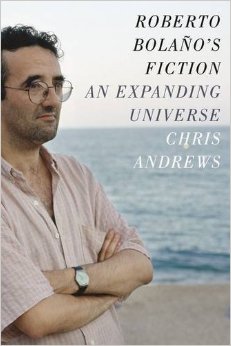 A highly in depth, academic study of the fiction of Roberto Bolaño. It would help to have read his complete works before reading this book since it literally examines all of his published work (as well as interviews he had given over the course of his life). There are still some books I haven’t yet read (but this only made me want to get to them sooner) so if you aren’t familiar with his complete catalogue, some of this may lose you.
A highly in depth, academic study of the fiction of Roberto Bolaño. It would help to have read his complete works before reading this book since it literally examines all of his published work (as well as interviews he had given over the course of his life). There are still some books I haven’t yet read (but this only made me want to get to them sooner) so if you aren’t familiar with his complete catalogue, some of this may lose you. 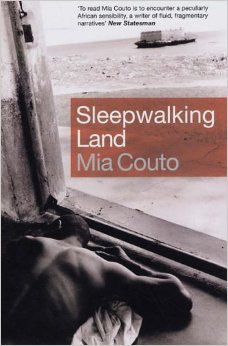 Mozambique’s Mia Couto is an author I’ve only become familiar with in the past year. The only book I’ve read up until now was his short story collection “The Blind Fisherman”. “Sleepwalking Land” is the first full length novel I’ve read by him. It also happens to be his first novel, originally published in 1992. In “The Blind Fisherman”, Couto’s stories are awash with ‘Magical Realism’ but each had a distinct African flavor to them, combining African folklore, the fantastic and sometimes brutal realism.
Mozambique’s Mia Couto is an author I’ve only become familiar with in the past year. The only book I’ve read up until now was his short story collection “The Blind Fisherman”. “Sleepwalking Land” is the first full length novel I’ve read by him. It also happens to be his first novel, originally published in 1992. In “The Blind Fisherman”, Couto’s stories are awash with ‘Magical Realism’ but each had a distinct African flavor to them, combining African folklore, the fantastic and sometimes brutal realism. 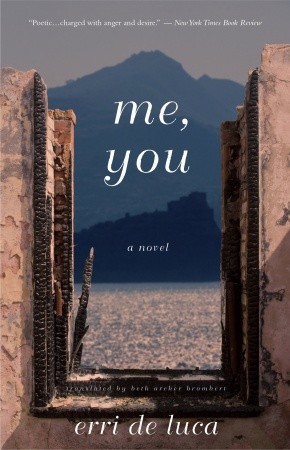 Erri De Luca is known to be the most widely read author in Italy today. He’s an author I enjoy reading very much. His novels often explore life in post-war Italy, usually through the eyes of a child growing up amidst the ruins and confusion and the aftermath of war.
Erri De Luca is known to be the most widely read author in Italy today. He’s an author I enjoy reading very much. His novels often explore life in post-war Italy, usually through the eyes of a child growing up amidst the ruins and confusion and the aftermath of war.  2
2
 For a such a short novel — 84 pages — this is incredibly dense. It is most definitely written for the lovers of literature by a lover of literature, particularly lovers of the period between Dada and Surrealism.
For a such a short novel — 84 pages — this is incredibly dense. It is most definitely written for the lovers of literature by a lover of literature, particularly lovers of the period between Dada and Surrealism. 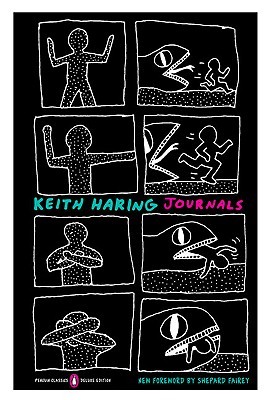 I have to admit that I was never a huge fan of Keith Haring’s work. He was insanely popular during the 1980s but at the time, to be honest, I just didn’t “get it”. My first exposure to his work was not in a gallery or a museum, but in the subways of New York City. It wasn’t uncommon in those days to find any number of his drawings on the black paper which used to cover the old movie adverts or whatever other advertising one normally doesn’t pay that much attention to during the course of their commute. In those days, I worked as a messenger, so I was riding the subways all the time. Seeing Haring’s drawings was commonplace, as common as the ads themselves. It was only as the years went on — and as Haring became more of a popular visual artist — that I learned just who was behind these mysterious drawings, which in a way, at least to me, reminded me of glyphs from some long lost culture. Some of them were amusing, I admit, but his work never moved me as much as other artist’s work had. I know this is probably blasphemy in some quarters but it is what it is.
I have to admit that I was never a huge fan of Keith Haring’s work. He was insanely popular during the 1980s but at the time, to be honest, I just didn’t “get it”. My first exposure to his work was not in a gallery or a museum, but in the subways of New York City. It wasn’t uncommon in those days to find any number of his drawings on the black paper which used to cover the old movie adverts or whatever other advertising one normally doesn’t pay that much attention to during the course of their commute. In those days, I worked as a messenger, so I was riding the subways all the time. Seeing Haring’s drawings was commonplace, as common as the ads themselves. It was only as the years went on — and as Haring became more of a popular visual artist — that I learned just who was behind these mysterious drawings, which in a way, at least to me, reminded me of glyphs from some long lost culture. Some of them were amusing, I admit, but his work never moved me as much as other artist’s work had. I know this is probably blasphemy in some quarters but it is what it is. 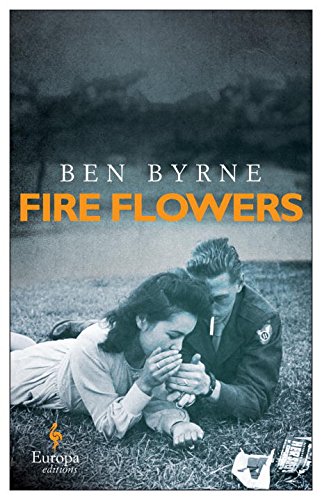 “Fire Flowers” is Ben Byrne’s first novel and it’s quite an impressive debut. Set in the months immediately following Japan’s surrender to the allied forces, the narrative follows four characters in the war’s immediate aftermath. There’s Hal Lynch, a former pilot and current photographer for “Stars and Stripes” who is slowly drawn to finding out the real effects of the two atomic bombs that were dropped to end the war; Satsuko Takara, a woman in her twenties who had lost her entire family in the firebombing of Tokyo and is trying to locate her missing brother; Hiroshi Takara, Satsuko’s fifteen year old brother, looking for his missing sister, trying to survive day by day with other orphaned children; and finally Osamu Maruki, a would-be writer who has just returned from the pacific islands to find his home city in ruins. He was once Satsuko’s lover, and he is on a quest to find her as well as trying to readjust to the changed landscape and American occupation.
“Fire Flowers” is Ben Byrne’s first novel and it’s quite an impressive debut. Set in the months immediately following Japan’s surrender to the allied forces, the narrative follows four characters in the war’s immediate aftermath. There’s Hal Lynch, a former pilot and current photographer for “Stars and Stripes” who is slowly drawn to finding out the real effects of the two atomic bombs that were dropped to end the war; Satsuko Takara, a woman in her twenties who had lost her entire family in the firebombing of Tokyo and is trying to locate her missing brother; Hiroshi Takara, Satsuko’s fifteen year old brother, looking for his missing sister, trying to survive day by day with other orphaned children; and finally Osamu Maruki, a would-be writer who has just returned from the pacific islands to find his home city in ruins. He was once Satsuko’s lover, and he is on a quest to find her as well as trying to readjust to the changed landscape and American occupation. 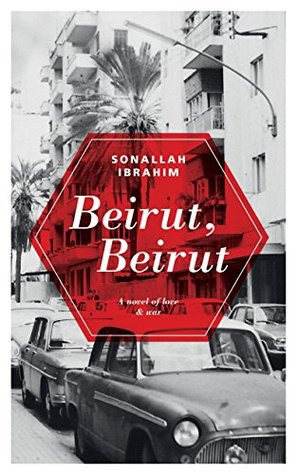 A fascinating novel which blurs the lines between fiction and journalism. Set in late 1980, the divisions of the brutal Lebanese Civil War are still in effect. Beirut is divided into East and West and depending on who you are or where your allegiance lies, one part of the city is most certainly off limits.
A fascinating novel which blurs the lines between fiction and journalism. Set in late 1980, the divisions of the brutal Lebanese Civil War are still in effect. Beirut is divided into East and West and depending on who you are or where your allegiance lies, one part of the city is most certainly off limits.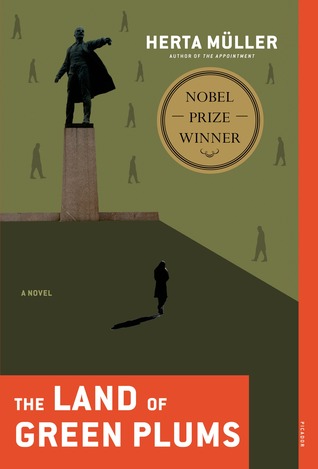 Nicolae Ceausescu’s police state in Romania was one of the most brutal out of all the communist block during the cold war years. Typical of such regimes, a cult of personality evolved around him and he used his secret police — the dreaded “Securitate” — to rule with an iron fist. During the fall of communism in 1989, there was a joke that went that Poland would take ten years, Czechoslovakia ten months and Romania, ten days. The revolution that saw the fall of Ceausescu’s regime began when one lone woman began yelling for the dictator to “shut up” as he was giving a speech. The army refused to turn on it’s citizens and on Christmas day, 1989, both the dictator and his wife were executed.
Nicolae Ceausescu’s police state in Romania was one of the most brutal out of all the communist block during the cold war years. Typical of such regimes, a cult of personality evolved around him and he used his secret police — the dreaded “Securitate” — to rule with an iron fist. During the fall of communism in 1989, there was a joke that went that Poland would take ten years, Czechoslovakia ten months and Romania, ten days. The revolution that saw the fall of Ceausescu’s regime began when one lone woman began yelling for the dictator to “shut up” as he was giving a speech. The army refused to turn on it’s citizens and on Christmas day, 1989, both the dictator and his wife were executed.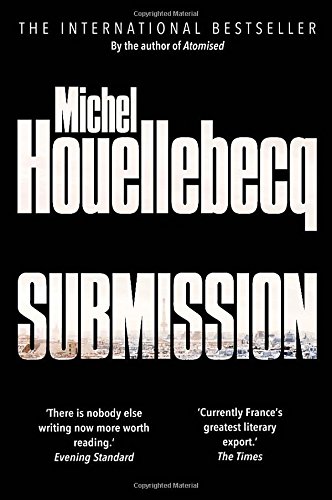 This novel has been the victim of bad timing — twice. On the day of its release, the Charlie Hebdo attacks occurred in Paris and a mere few weeks after its English translation release, the recent attack occurred. When the novel was first released it was said to be “alarmist” but after reading it, I don’t see it that way.
This novel has been the victim of bad timing — twice. On the day of its release, the Charlie Hebdo attacks occurred in Paris and a mere few weeks after its English translation release, the recent attack occurred. When the novel was first released it was said to be “alarmist” but after reading it, I don’t see it that way. I’d been waiting for this novel for over two years, ever since I first read about it. There’s been a lot of hype about this novel, mainly because it’s the author’s first novel and he secured a $2 Million advance for it after going through a bidding war from among 14 different publishers who desperately wanted this book. That, naturally, piqued my interest. I joked at the time that one could hear writers’ heads exploding the world over because of it. But what really piqued my interest more than anything else is the time frame in which the story is set — New York City, 1976-1977.
I’d been waiting for this novel for over two years, ever since I first read about it. There’s been a lot of hype about this novel, mainly because it’s the author’s first novel and he secured a $2 Million advance for it after going through a bidding war from among 14 different publishers who desperately wanted this book. That, naturally, piqued my interest. I joked at the time that one could hear writers’ heads exploding the world over because of it. But what really piqued my interest more than anything else is the time frame in which the story is set — New York City, 1976-1977.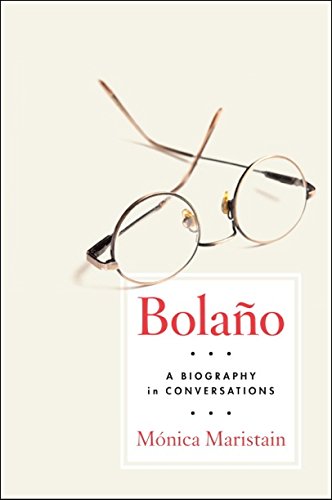 Everyone knows Roberto Bolaño these days and this is a good thing. Bolaño has done much to change the nature of Latin American literature over the past two decades. This book is the closest thing we have to a biography on the man, made up of interviews of people who knew him best, from his earliest years growing up in Chile to his years in Mexico through his final years in Spain.
Everyone knows Roberto Bolaño these days and this is a good thing. Bolaño has done much to change the nature of Latin American literature over the past two decades. This book is the closest thing we have to a biography on the man, made up of interviews of people who knew him best, from his earliest years growing up in Chile to his years in Mexico through his final years in Spain. If you’re a writer, you often hear about what one “isn’t supposed to do” with regard to the narrative and these little rules often turn many a novel into the same-old, same-old. What draws me to Luisge Martin as a novelist is the fact that he is more than willing to do what he sees fit and that is precisely what he does with his amazing novel “Woman In Darkness”. It’s a story about shadows, hidden identities, secrets, mysteries and how the pursuit of them can cause one to spiral down towards unknown depths.
If you’re a writer, you often hear about what one “isn’t supposed to do” with regard to the narrative and these little rules often turn many a novel into the same-old, same-old. What draws me to Luisge Martin as a novelist is the fact that he is more than willing to do what he sees fit and that is precisely what he does with his amazing novel “Woman In Darkness”. It’s a story about shadows, hidden identities, secrets, mysteries and how the pursuit of them can cause one to spiral down towards unknown depths.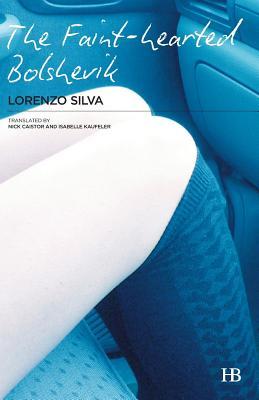 Who says the protagonist of a novel has to be “likable” in order for the novel to be enjoyable? Javier, the protagonist of this short but disturbing novel, isn’t very likable. He’s cynical, nihilistic, and vindictive, though at times he does show a more softer side. However, we are introduced to him as he’s driving to work on one of those Mondays all nine-to-fivers hate. As he gripes about the coming work day (while listening to Judas Priest on high volume), he accidentally rear ends a young woman’s car in front of him. A momentary lapse which only furthers his frustrations for a Monday morning he already despises. The woman in front of him — Sonsoles — is livid, insulting Javier for his incompetence and an argument ensues. Javier reveals to the reader his hatred for Sonsoles, based purely on her class: she’s driving a convertible, her appearance indicating wealth. Not that Sonsoles is a nice woman herself. The two bicker back and forth as the policeman takes down their information and soon both are on their way. However the incident sticks in Javier’s craw, a slow burn. He decides he’s going to spend the rest of the summer making Sonsoles’s life a living hell.
Who says the protagonist of a novel has to be “likable” in order for the novel to be enjoyable? Javier, the protagonist of this short but disturbing novel, isn’t very likable. He’s cynical, nihilistic, and vindictive, though at times he does show a more softer side. However, we are introduced to him as he’s driving to work on one of those Mondays all nine-to-fivers hate. As he gripes about the coming work day (while listening to Judas Priest on high volume), he accidentally rear ends a young woman’s car in front of him. A momentary lapse which only furthers his frustrations for a Monday morning he already despises. The woman in front of him — Sonsoles — is livid, insulting Javier for his incompetence and an argument ensues. Javier reveals to the reader his hatred for Sonsoles, based purely on her class: she’s driving a convertible, her appearance indicating wealth. Not that Sonsoles is a nice woman herself. The two bicker back and forth as the policeman takes down their information and soon both are on their way. However the incident sticks in Javier’s craw, a slow burn. He decides he’s going to spend the rest of the summer making Sonsoles’s life a living hell.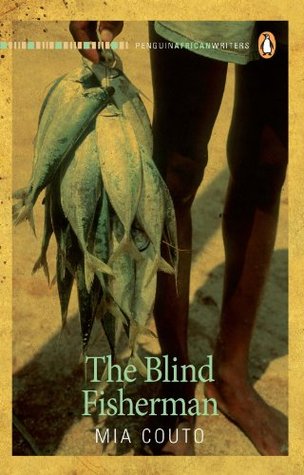 From Mozambique. A collection of short stories which were originally issued as two separate books, Voices Made Night (1990) and Every Man Is A Race (1994). This is my first sampling of Couto’s work and these short stories are very interesting reads to say the least. The stories from Voices are steeped in magical realism and African folklore while those in Every Man tend to have a more explicit political message. Many of these stories mine Mozambican history, from colonization to their bloody civi war to independence from Portugal. The issue of race is paramount in many of these stories and how the indigenous population were treated by their Portuguese colonizers. The stories that don’t necessarily have a political edge to them (or at least none that I can see) are surrealistic, folkloric tales which takes reality and turns it on its head for a most enjoyable experience.
From Mozambique. A collection of short stories which were originally issued as two separate books, Voices Made Night (1990) and Every Man Is A Race (1994). This is my first sampling of Couto’s work and these short stories are very interesting reads to say the least. The stories from Voices are steeped in magical realism and African folklore while those in Every Man tend to have a more explicit political message. Many of these stories mine Mozambican history, from colonization to their bloody civi war to independence from Portugal. The issue of race is paramount in many of these stories and how the indigenous population were treated by their Portuguese colonizers. The stories that don’t necessarily have a political edge to them (or at least none that I can see) are surrealistic, folkloric tales which takes reality and turns it on its head for a most enjoyable experience.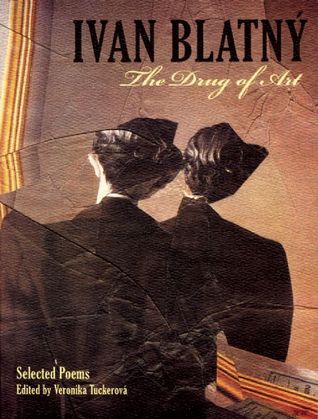 Czech poet Ivan Blatný, like many of his contemporaries, found himself in exile after he was “officially banned” by the communist regime in the late 1940s. Declared dead on Czech radio, his poetry was forever banished and he went to spend the rest of his life in obscurity in England where he continued to write but found no publishers for his work. It wasn’t until the late 1970s that some of his work began to find a home in publications such as samizdat and other exile publishers but it wasn’t until 1989 that his work would appear in his home country again.
Czech poet Ivan Blatný, like many of his contemporaries, found himself in exile after he was “officially banned” by the communist regime in the late 1940s. Declared dead on Czech radio, his poetry was forever banished and he went to spend the rest of his life in obscurity in England where he continued to write but found no publishers for his work. It wasn’t until the late 1970s that some of his work began to find a home in publications such as samizdat and other exile publishers but it wasn’t until 1989 that his work would appear in his home country again.

